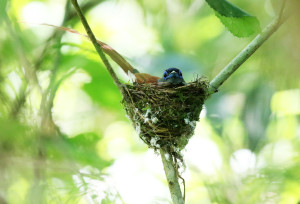
Out of the car, across the river, into the forest and within moments a stunning Bar-bellied Pitta emerges from the vegetation of the tropical forest floor; this is how birding should be every time one visits a new location with one of the target species showing itself well for full appreciation within minutes of arrival.
Sometimes there are places that are not far away that I always mean to visit but somehow never get around to; Cat Tien National Park in southern Vietnam is one of these. Spending much of my time in Bangkok, the flight to Ho Chi Minh City is a short one with the addition of only a four-hour drive to the national park itself but with the vast majority of species that occur there being the same as ones I frequently see in Thailand I have always put off visiting this famous birding location until another day. However, in June 2022 I found myself with the opportunity to spend a few days at Cat Tien to look for a few of its specialities and generally check out the birding.
If you would like to join me on a birding trip in Vietnam take a look at the dates, itinerary and all the details of my next tour - Vietnam Birding Tour.
Pittas are one of the most enigmatic and sought-after group of birds in Asia and Cat Tien National Park is known as one of the best places to see two range-restricted species; Bar-bellied Pitta and Blue-rumped Pitta. To see one of these two ground-dwelling birds within minutes of arrival was both a surprise and very welcome. It turned out that in June Bar-bellied Pitta was very active and vocal throughout the forest here so that even at 11am in the heat it was fairly easy to find one and watch it as it hopped around in the leaf litter close to the park headquarters. At some times of the year pittas attend feeding stations set up by photographers at Cat Tien but during my visit none of these were active so while it was not difficult to see a Bar-bellied Pitta, photographing one as it foraged on the shady forest floor was far from easy. I managed one interesting shot though.
Over the course of the four days I spent birding at Cat Tien I saw Bar-bellied Pitta every day and heard many more than I saw; nice to have a ground-dwelling species of pitta that did not require a massive effort to see. Shortly after my first encounter with this beautiful bird I came across a pair of Grey-faced Tit Babblers feeding recently fledged young, a second lifer within an hour of arrival, although one with rather less visual appeal. Less yellow underparts than the more familiar Pin-striped Tit Babbler, striping restricted to the upper breast, less rufous upperparts and greyish lores identified this species and it proved to be fairly common although I was unable to get decent photo of them due to their habit of keeping to dense foliage.
Species such as Greater Racket-tailed Drongo, Laced Woodpecker, Great Iora and Racket-tailed Treepie were very obvious and active in the moist forest here and walking along one of the main tracks from the headquarters revealed one of my favourite birds anywhere there was water; Black-and-red Broadbill. These birds create a pendulous nest above water, using mud to line the inside of their nests and at Cat Tien they proved common at this time of the year.
Violet Cuckoo is an attractive bird that is not common throughout much of Southeast Asia but during my stay at Cat Tien proved to be unusually abundant. Their trilling call was a common sound and without even trying to I saw multiple individuals of these little cuckoos every day. Adults and juveniles were easily seen.
Birding at Cat Tien in June was very sweaty. Temperatures were not as high as they would be in March or April but the humidity was high and birding all day in the forest resulted in a sweat-soaked shirt at the end of the day. Cold drinks and air-conditioning were very welcome back at my accommodation at the end of the day along with some really delicious traditional Vietnamese cuisine. Staying at Thuy Tien Ecolodge was very pleasant and I would recommend it to independent travellers. It was located just outside of the national park, within a very short walk of the ferry which takes visitors across the river and into the forest, and while staying outside of the park means that one has to buy an entry ticket on a daily basis, the cost of accommodation inside the park was higher.
The forest at Cat Tien is extensive but bird abundance was at its highest on the trails and tracks close to park headquarters with feeding flocks that included Bar-winged Flycatcher-shrike, Bronzed Drongo, Heart-spotted Woodpecker, Velvet-fronted Nuthatch, Laced Woodpecker and Black-and-buff Woodpecker among others. These flocks seemed to be feeding in the same places every day and some of the birds provided some very nice photographic opportunities.
These curious little woodpeckers are superficially very similar so it was nice to see them in detail and close to each other comparison. In fact both of these species were fairly abundant on my visit and seen on a daily basis along with Laced Woodpecker. One of the woodpecker specialities of Cat Tien is one that I have only seen a few times, Pale-headed Woodpecker, so I was keen to see this and I was lucky enough to find one noisily calling from some dense vines around a large tree. There were plenty of other woodpeckers to see over the few days too with a pair of magnificent Great Slaty Woodpeckers, Rufous Woodpecker, both Common and Greater Flamebacks as well as a pair of Lesser Yellownapes feeding young.
Although birds are always the focus of my trips it is always nice to see mammals too, although usually much harder to locate. I heard the song of gibbons close to park headquarters, without seeing them, but after lunch one day I spent some time looking for them with a level of success I did not expect. It was lovely to see Yellow-cheeked Gibbon at close range as it fed on wild fruit.
There remained a few birds that were potential lifers for me so I focussed my attention on those for much of the time, although having failed to see several calling Germain’s Peacock Pheasants I also took time out to enjoy other birds so as not to get bogged down with failing to see my target birds. After much effort with the trainee local guide I was birding alongside a male Germain’s Peacock Pheasant came in and sat in a low, thorny bush giving me nice views although with all the undergrowth the camera refused to focus on the bird.
While most of the forest at Cat Tien consists of moist tropical forest there are also areas of drier woodland and grassland so to break things up a little I put my quest for target birds on hold and spent a morning in these habitats, hiring a bicycle from HQ to access these areas in the early morning. Although we were probably a bit late in the morning for Green Peafowl species including Lesser Coucal, White-crested Laughingthrush, Pied Bushchat, Vinous-breasted Starling and Baya Weaver were easily added to the list. A couple of Chinese Francolins were calling and we were lucky enough to spot a female in the grass.
In the scattered trees in these areas I found a few Indochinese Cuckooshrikes, a species with a limited range in Southeast Asia and it was one of the first times I have been close enough to this bird to get a good photograph.
Another species that was busy in this habitat was Large Woodshrike. We came a cross two family groups with noisy youngsters begging their parents for food which allowed for some close up views and the chance to get some nice photographs of a bird that I normally see up in the treetops.
With this pleasant interlude into a different habitat I added lots of species to the trip list but after lunch we decided to have another look for Blue-rumped Pitta. I had been repeatedly told that it was a difficult bird to see at this time of the year with few observations made. Walking the forest trails we heard several Bar-bellied Pittas but after around an hour the distant call of a Blue-rumped Pitta awakened me from a sweaty daze. It is funny how the sound of a target species can inject some excitement into the mundanity of plodding along a hot forest trail but as we got close to the origin of the call the tension heightened. For quite some time the bird called from the forest floor, just out of range of sight but suddenly it came straight towards us and gave me great views. What was most unexpected was its behaviour afterwards, repeatedly hopping around us, often at close range for maybe up to ten minutes. It was incredible to get such close and prolonged views of this tricky bird and it even posed for some photographs.
At other times of the year, when things are drier, Blue-rumped Pitta can be easier to see at Cat Tien, which is good news as this coincides with a Vietnam birding tour that I will be leading that takes in Cat Tien NP and other locations; take a look here for the itinerary – South Vietnam Birding Tour.
Bird abundance was surprisingly high throughout my stay at Cat Tien and with quality birds like Orange-breasted Trogon, Banded Broadbill, Banded Kingfisher, Malayan Night Heron, Dusky Broadbill and Blue-winged Pitta all added to my bird list not only did I manage to see 4 of the potential 5 lifers (the one I missed was Orange-necked Partridge) I also saw a wide range of superb Asian forest birds.
Birding though the day was very productive, as it often is during the wet season in Southeast Asia but I took some time out in the afternoon to take a rest and one day took a walk through some farmland to the river to see what I could turn up. In general the Vietnamese farmland is poor for birds, it would seem that hunting has devastated the populations of many birds, with birds that are extremely common in Thailand, obvious by their total absence in Vietnam. However, I did manage to find a few interesting birds including a family group of noisy Pied Kingfishers, a couple of Cinnamon Bittern, a pair of Chestnut-headed Bee-eaters, Burmese Shrike and a wonderful pair of Blue-breasted Quail, I bird I have only ever seen once before.
Back in the forest there was one final highlight. While walking along a track a nymph-like flash of plumage dashed across the trail and into the forest. The bright rufous and elongated tail put me in the mind of a Paradise Flycatcher and so it turned out, but as we watched this fantastic bird it settled itself onto a tiny nest.
Blyth’s Paradise-flycatcher on a nest, what a sighting!
If you would like to join me on a birding trip in Vietnam take a look at the dates, itinerary and all the details of my next tour – Vietnam Birding Tour.


 July 23rd, 2022
July 23rd, 2022  Nick
Nick 

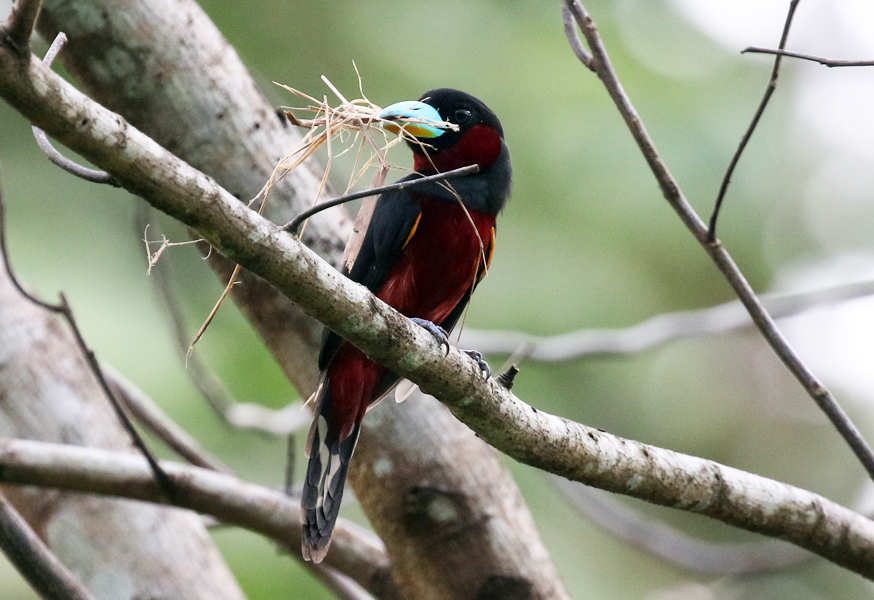
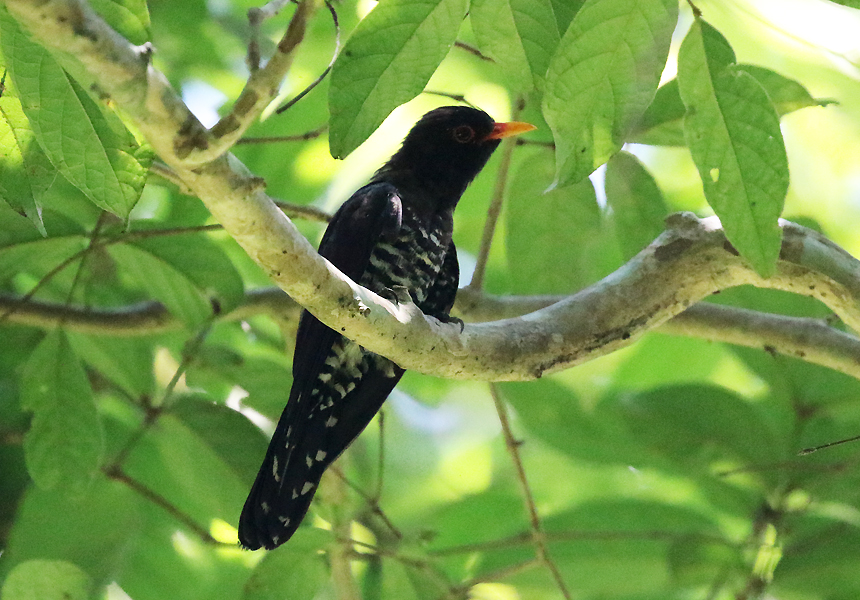
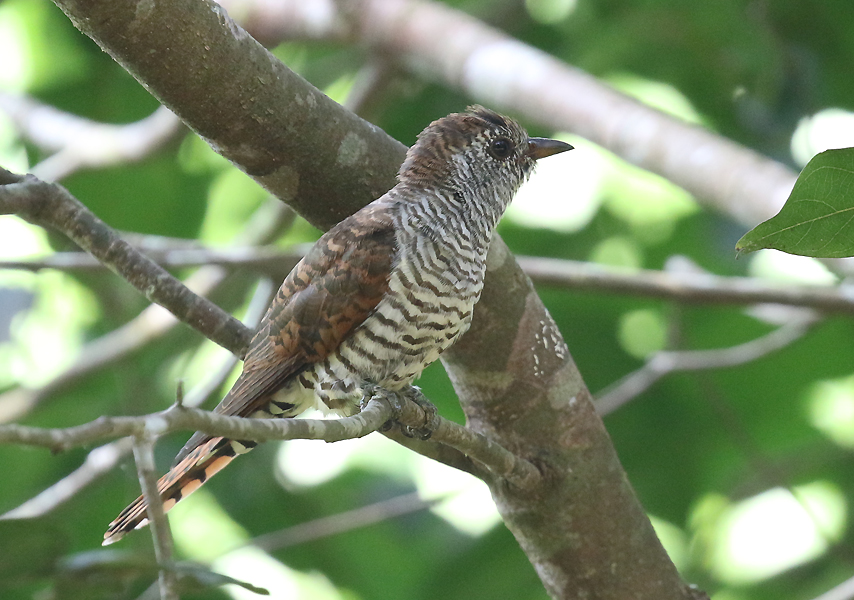
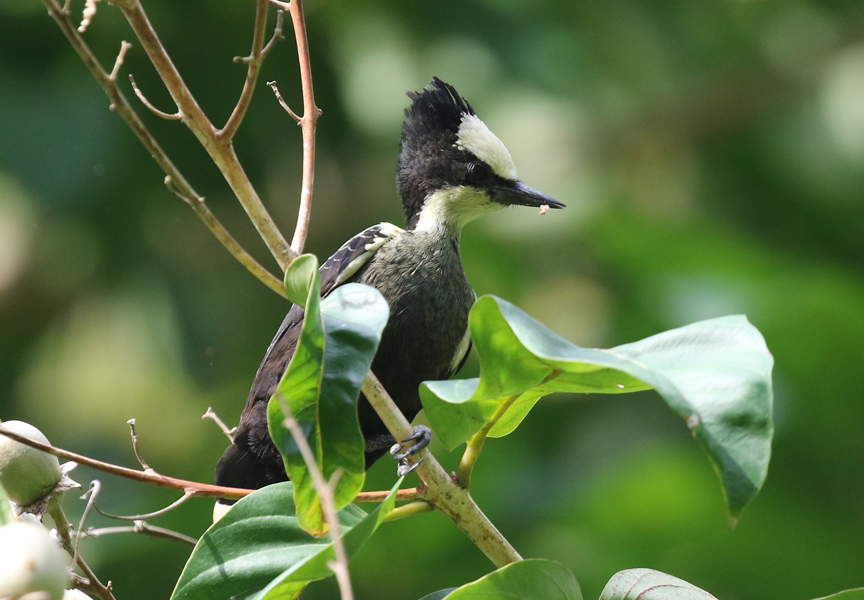











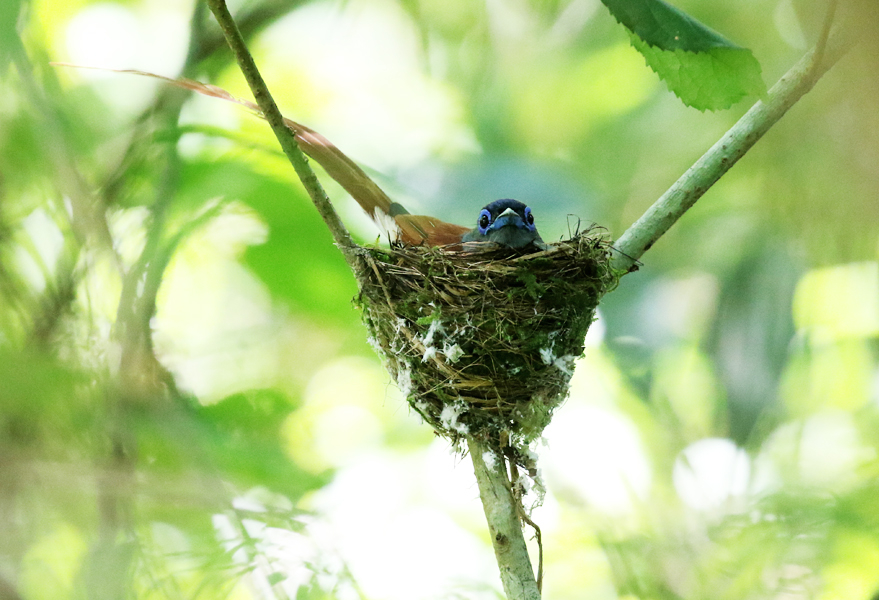
 Posted in
Posted in  Tags:
Tags: 









